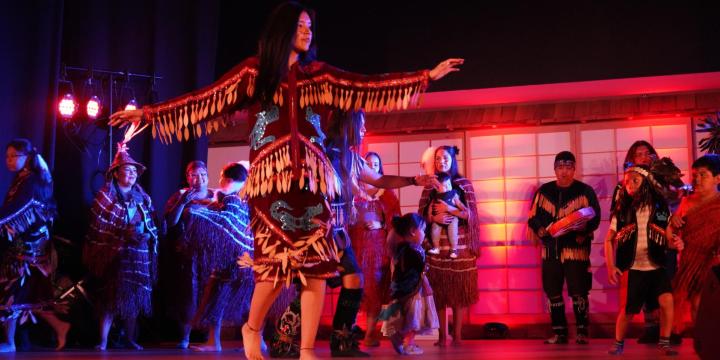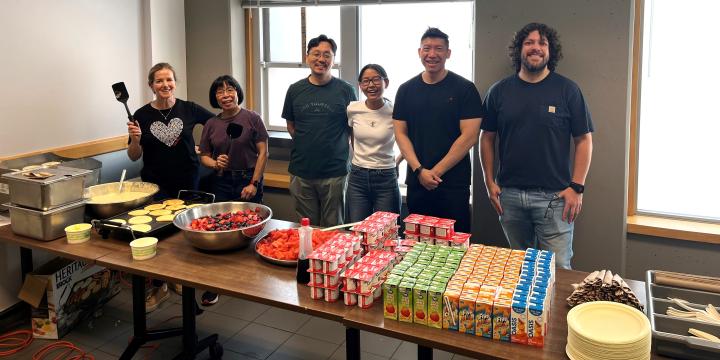
National Indigenous History Month: The Importance of Preserving Cultural Heritage
June is National Indigenous History Month in Canada, and it is a time to celebrate and learn about the unique, rich and vibrant cultures, traditions and experiences of First Nations, Inuit and Métis.
In 2010, Canada's federal government endorsed the United Nations Declaration on the Rights of Indigenous Peoples (UNDRIP) and in 2016, officially adopted it and stated its intention to implement UNDRIP in accordance with the Canadian Constitution. As part of the declaration, Canada must take into account the diversity of Indigenous peoples and, in particular, the diversity of the identities, cultures, languages, customs, practices, rights and legal traditions of First Nations, Inuit and the Métis.
Colonialism has attempted to rob Indigenous people of their cultures and languages, but there are people working hard to preserve them in their various forms. Many Indigenous Elders, professors, curators and artists contribute to cultural preservation, making available the tools for current and future generations to celebrate and utilize the cornerstones of Indigenous culture.
As UNDRIP (Article 31) declares that Indigenous peoples have the right to maintain, control, protect and develop their cultural heritage, traditional knowledge and traditional culture, we wanted to highlight the incredible work of some self-identifying Indigenous women who are making an impact in the preservation and profile their important work in the various sectors such as art, knowledge of the properties of fauna and flora, language and design.
What is Indigenous Cultural Heritage?
Cultural heritage is both tangible and intangible. It consists of physical objects of cultural significance and exists in the form of knowledge and practices passed down through generations. It is also what defines a culture through language, oral history, art and cooking techniques, rituals and stories.
According to the Indigenous Heritage Circle, Indigenous cultural heritage encompasses ideas, experiences, belongings, artistic expressions, practices, knowledge and places that are valued because they are culturally meaningful and connected to shared memory. Indigenous heritage is varied, complex, vibrant and cannot be separated from either Indigenous identity or Indigenous life. It can be inherited or created by people today as a legacy for future generations.
Being connected to the distinct worldviews, traditions and territories of their ancestors is fundamental to the identity and well-being of many Indigenous peoples and communities. The stewardship and revitalization of Indigenous heritage has a significant impact in creating positive social, economic, physical and mental health impacts in communities.
Artifacts
Tangible and intangible cultural heritage signifies belonging and identity to a region or group. Oral stories passed on that tell of origin are intangible, and the artifacts preserved and passed down through generations are tangible objects; a window into the past.
These treasures are important for every culture to know who they are, but Indigenous people of Canada were denied that right for many generations due to colonialism. Many museums collected, stole and mis-categorized Indigenous cultural property and knowledge. This led to the misrepresentation of objects and disrespectful treatment of many sacred artifacts.
Now many First Nations are working to repatriate cultural property that may have been either taken, appropriated, stolen, or sold. One such person is Michelle Washington, Royal BC Museum’s resident Repatriation Specialist. Born and raised in the Tla’amin First Nation near the town of present-day Powell River, Michelle, whose ancestral name is Siemthlut, works to care for collections and partner with communities to return artifacts to their homes.
“So often you hear talk around reconciliation, but not really taking any action on it. This is one of the ways that a large institution like a museum can actually take action and put their money where their mouth is. To respectfully fix the unethical past practices that have done so much damage and are no longer legal.”
Traditional Techniques
Traditional techniques, such as weaving, are an integral part of Indigenous cultures.
After colonialism suppressed important Indigenous traditional skills and techniques in the early 20th century, several groups have worked to revitalize generations of lost knowledge. This includes weaving, which is passed down through the matriarchal lines for millennia.
One such group is the Musqueam Weavers, spearheaded by Wendy Grant-John, a Musqueam leader, who has worked for more than 30 years to advance the causes of Indigenous peoples.
“The Musqueam Weavers gathered in 1984 to help our community preserve our traditional art form. Weaving was very important for our culture and for the women in our community,” explains Leila Stogan, who was a member of the group.
Leila has been weaving since the 1980s, when Musqueam Weavers reintroduced the art form back into their community. Her designs, which are handmade from scratch, are used for ceremony, namings, marriages, and memorials and can be seen on permanent display in MOA’s Multiversity Galleries.
Language
Language is a conduit for culture, used to pass down teachings, stories, expressions and history. There is no replacement for language, as many words and terms translate into feelings, humor, tone, or simply cannot be expressed in another language. Shared language also a sense of pride, community and connection to culture.
Through acts of cultural genocide, many Indigenous children were forced to stop using their languages and assimilate into the language of colonizers. Due to this practice, there are whole generations who do not speak, read or write the languages of their ancestors.
BC holds more than 60% of the Indigenous languages in Canada. Some 34 different languages, not including the various dialects, are spoken throughout the province.
With the help of Elders and academics, there is great work being done to preserve and regenerate the use of Indigenous languages. One such example is a group of dedicated Haida Elders, many of whom are residential school survivors, who worked for more than two decades to teach and preserve HlGaagilda Xaayda Kil, the Skidegate dialect of the Haida language.
Through the Skidegate Haida Immersion Program, their contributions include an app featuring 2,000 words and 500 phrases. ; “The Glossary” contains more than 26,000 Haida words; 130 lesson plans; 80 children’s books; and the Haida Place Names Mapping Project, which mapped more than 2,200 Haida place names.
All nine Haida Elders received Honorary Doctor of Laws degrees from the Vancouver Island University. Their names are: Gaayinguuhlas (Roy Jones), Yang K'aalas (Grace Jones), Ildagwaay (Bea Harley), Taalgyaa'adad (Betty Richardson), Jiixa (Gladys Vandal) Sing.giduu (Laura Jormanainen), SGaanajaadsk'yaagaxiigangs (Kathleen Hans), Niis Waan (Harvey Williams) and GwaaGanad (Diane Brown).
There are many elements that make up a culture, and they evolve with each generation. Change is inevitable, but it is important to move forward with the knowledge of where we came from. The ability of people to holistically engage with their culture, is directly tied to the overall wellbeing of the population and has social and economic advantages. The separation of Indigenous people from their culture and ways of being, has had detrimental impacts that we continue to see today. Settlers on these lands have the responsibility to learn more about, understand and respect the lands they inhabit
Indigenous history is important not only for future generations of Indigenous people but also for settlers who live here now, to understand and respect the lands they inhabit. A lot of harm has been done to cause the loss of Indigenous cultural heritage, but with the help of Indigenous women and allies such as those mentioned already, that history and awareness can be revived and preserved for further understanding, learning and celebration.
Banner Image: Welcome Figure at Ambleside, West Vancouver. Constructed from an old growth cedar log from Hollyburn Mountain, the Welcome Figure is a gift from the Sḵwx̱wú7mesh (Squamish) Nation, marking K’aya’chtn (gathering of ocean canoes). In honour of the teachings and wisdom of the Squamish Nation grandmothers, the sculpture fosters respect for the land, animals, and people that occupy it.

